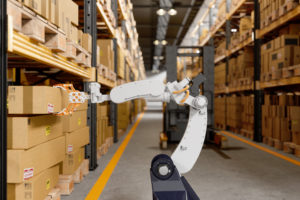Autonomous robot navigation technology in human populated environments

Mobile service robots
A service robot assists humans by performing tasks considered to be dangerous, repetitive or time-consuming. Current robots have varying degrees of autonomy, ranging from partially autonomous, including some human-robot interaction, to fully autonomous.
In recent years, substantial developments have taken place in the field of mobile service robots, allowing an increasing number to be deployed amongst humans. Mobile robots can navigate through a physical space autonomously, however when robots interact within human-populated environments, their decision-making must accommodate uncertainty to behave autonomously. Consequently, such robots require deliberation capabilities that allow them to plan under such uncertainty and automatically generate and execute plans that achieve goals.
Markov decision processes (MDPs) are a widely used formalism to model sequential decision-making problems for scenarios unique to human-populated environments. However, the general use of MDPs requires defining the goal into a reward structure or as reaching a set of states, which can be either cumbersome and error-prone, or not having safety explicitly represented.
Benefit from building a library of data
Researchers at Oxford have created software that allows autonomous robots to plan the best way to navigate around a dynamic environment based on the environment structure and prior experience. MDPs are used in combination with graphical representations of the topological map of the environment. The MDPs solve graph-based problems such as finding the best path to visit a sequence of locations under navigation uncertainty. Paths generated by the MDPs can be executed in both simulations and on real robots.
This innovative path navigation solution captures both the specific solution and the decision steps into a library, thus building the robot’s own dataset. Data from previous navigation performances can be used to learn the MDP parameters from an experience. Using the ever-growing data collected in the library, new navigation problems can be simulated with learnings acquired in previous models to become more efficient and reliable.
Navigation performance statistics can be captured and used for simulation and recreation of future robot behaviour. This library is used by tools for discrete event simulation of robots or teams of robots moving on topological maps and in simple 2D worlds.
Open for Licensing
This software is suitable for use by any industrial robotics developer, especially those looking to integrate autonomous robots working alongside humans in a dynamic environment. The technology allows models to be created in Python, either manually or from data. The Python software integrates with standard robotics middleware ROS, but can also be integrated with other robotics frameworks. We provide solvers to address the problems but can also support external solvers to accept models from the library. New capabilities can be added continuously, so the scope of this technology is constantly improving.
Consultancy services are also available.
about this technology

